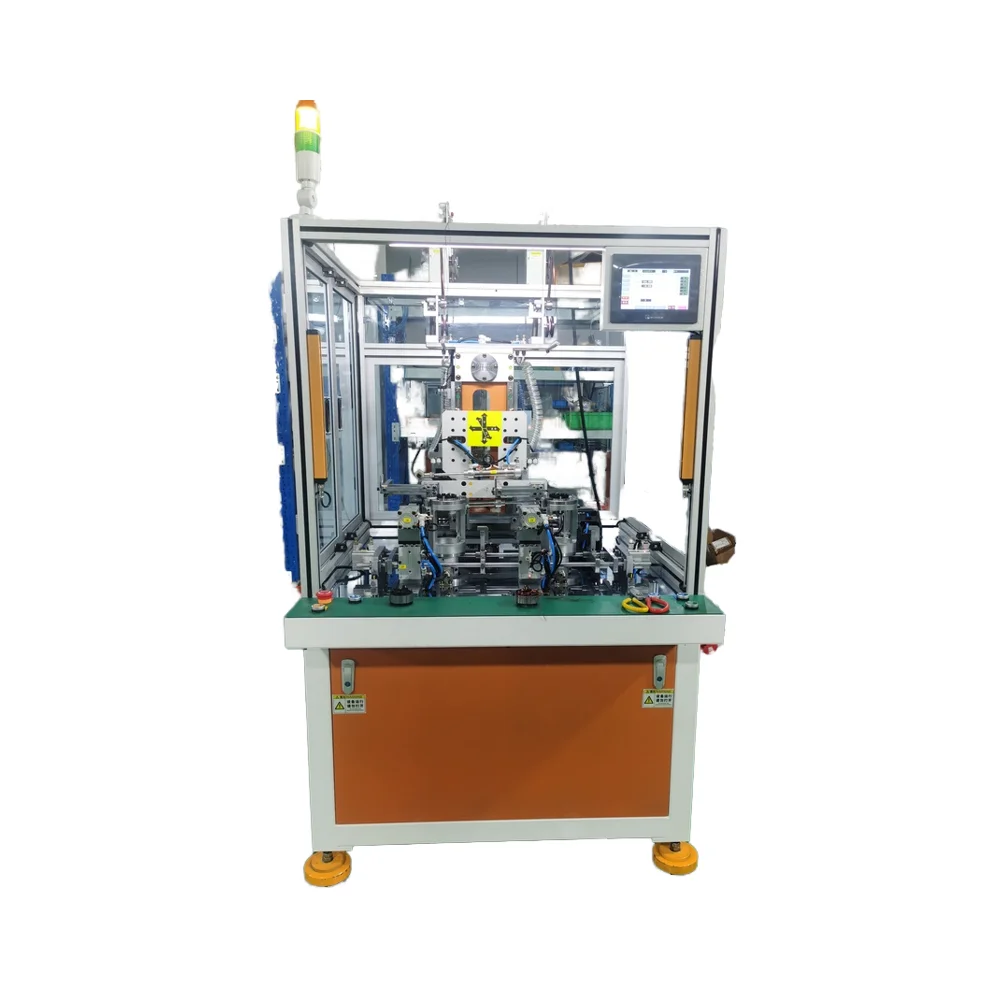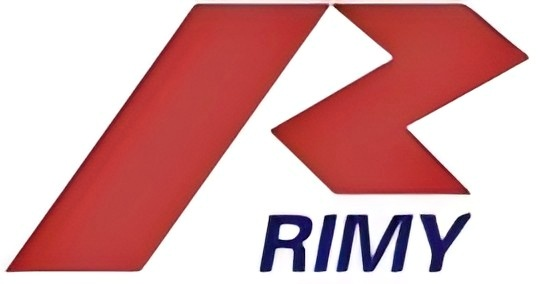Technological Evolution of Automatic Stator Winding Machines
From Manual Labor to Robotic Precision: Historical Progression
The development and history of the Fully Automatic Stator Winding Machine Indeed, automatic stator winding machines would not have been possible without the original, manual winders of the early 20th century which were fed by labour, as well as a power source - although in fairness to the latter, the state of the art transmission of the time was the telegraph. Semi automatic CNC machine controlled systems were being developed by the 1980s, which resulted in a 60% decrease in production errors with a human in the loop. As discussed in the Asia-Pacific stator winding machine market research, these intermediary techniques held sway over industrial take-up until the 90s. The advent of fully automated systems, powered by vision-guided positioning since 2020, means ultra-precise winding at 99.9% consistency during 24/7 production.
Fully Automatic vs. Semi-Automatic Machine Capabilities
Fully automatic stator winding machines differ from semi-automatic models in three critical aspects:
- Throughput capacity: Robotic systems complete 120—150 windings/hour versus 40—60 in semi-automatic configurations
- Operator dependency: Automated lines require only 1 technician per shift compared to 3—5 for semi-automated stations
- Precision thresholds: Laser calibration maintains ±0.005mm wire placement accuracy, essential for aerospace-grade motors
Semi-automatic machines remain cost-effective solutions for small-batch specialty motors, where flexibility outweighs volume requirements.
AI and IoT-Driven Optimization in Automatic Winding Systems
AI and IoT Today, automatic winding systems are tapping into artificial intelligence (AI) and Internet of Things (IoT) connectivity to advance motor manufacturing. These technologies provide an unsurpassed accuracy which ensures that the winding conditions are continuously improved during running. Sensors collect torque, tension and temperature data every 0.5 seconds, allowing AI algorithms to make micro-adjustments that keeps tolerances within ±5 microns. This live control process reduces manufacturing waste by 17 percent for each batch produced and its production cycle times by 23 percent. With the integration of ML and industrial IoT, winding systems have evolved into intelligent production spots from isolated machines.
Real-Time Monitoring Algorithms for Quality Assurance
Computerised visualisation systems equipped with a vibrational analysis sensor identify any microscopic defects during winding. The results are then compared against a digital twin of an ideal electromagnetic setup, automatically flagging up any discrepancies such as coils crossing or the wrong wire tension. Automated correction procedures act within 10s of milliseconds—lowering the failure rate by 89% relative to manual inspection. This self-contained system logs every twist of the road for trace-ability and audit-ability, generating tamper-proof quality records accessible from encrypted Cloud dash boarded. Production managers instantaneously recognize limitations, while seamlessly adhering to ISO 55000 standards.
Predictive Maintenance Through IoT Connectivity
IOT-enabled devices send vibration notes, thermal imprints, and power metering data to neural networks in the cloud. These algorithms use historical failure data to provide early warnings weeks in advance about bearing degradation and insulation wear. Research shows 45% of industrial organizations are able to reduce downtime through the application of better predictive maintenance, saving them $740k per year per average massive asset base. Work orders are automatically prioritized to reduce failure probability and spare part inventories restocked by linked ERP systems. This moves the maintenance from scheduled plants stop to extreme need interventions and extends the machine life by 40%.

Case Study: 23% Efficiency Gains in Automotive Motor Production
There were 23% efficiency gains in 6 months with the implementation of automatic stator winding for automotive electric motors. Through incorporating optical fiber sensors alongside copper windings, the system was able to pick up tiny heat differences which disturbed 97% uniformity of electromagnetic fields. Reduction in cycle time was 28 seconds per stator with IoT-enabled feeder system connectivity and AI optimization. OEE rose from 76% to 94%, handling a 31% increase in quarterly demand with no increase in staff. Thermal scans corroborated 15°C drops in operating temperatures— which led to improved motor life.
Market Growth Projections for Automatic Stator Winding Technologies
6.8% CAGR Forecast (2024-2032): Key Drivers Analyzed
Three Key Growth Driving Factors of Automatic Stator Winding Machinery Market The worldwide market for automatic stator winding machinery is estimated to show a growth at 6.8% CAGR up to 2032, according to a new Fact.MR study. Electric vehicle manufacturing requirements are behind 38% of new installations, with growing labor costs (around 7% per year in emerging economies) pushing forward automation. Incentivization of government towards sustainable manufacturing also boost investments, especially in the Asia-Pacific where motor production is growing at a CAGR of 12% (2020-2025). This momentum is indicative of the broader market shift to AI-enabled winding solutions, improving accuracy and throughput.
Segmentation by Machine Type and Regional Demand
Regional and technological segmentation reveals distinct growth patterns:
| Segment | Market Dominance | Key Growth Indicator |
|---|---|---|
| Asia-Pacific | 48% global share | 15% YoY installation growth |
| North America | 29% global share | 10% revenue surge (2023) |
| Fully Automatic | 67% revenue share | 20% cost reduction vs. semi-auto |
| EV Applications | 41% sector share | 9.2x demand multiplier since 2020 |
Industrialization in China and India accounts for 62% of regional expansion, while U.S. renewable energy investments prioritize high-throughput automated models.
Renewable Energy Sector's 31% Market Share Expansion
Renewable applications are now stimulating 31% of stator demand growth, all for wind turbine generators over 5MW. This is consistent with international pledges to spend $2.3 trillion on clean energy infrastructure by 2030. Wind power generation installations need no less than 480,000 high-torque stators per year, and for wound copper components can save 0.4% in energy loss per part. Solar inverters also account for 18% of sector growth, they require a specific winding arrangement that can be provided only via automatic machines.
Performance Benchmarking: Automatic vs Traditional Winding Methods
Error Rate Reduction from 2.1% to 0.4% in High-Volume Production
Modern automatic stator winding machines achieve a 0.4% defect rate in mass production environments, outperforming traditional methods— 2.1% average according to 2023 industrial motor manufacturing data. This 81% improvement stems from robotic systems eliminating human-induced inconsistencies in wire tension, layering patterns, and insulation placement — critical factors in stator reliability.
ELECTRIC WINDING: Stator’s precision-wound with high-temperature wire to reduce heat and high RPM compatible up to 80,000 RPM to reduce electromagnetic interference and heat generation. Production yields are doubled compared to manual methods, and automated lines are online 98% of the time versus just 76% for semi-automatic systems. While skilled craftsmen typically spend 12 – 18 minutes on such stators via traditional means, automated machines process the same units one every 4.7 minutes with 99.96% process consistency.
The performance gap widens in complex windings — axial-flux motor stators with dual-layer fractional-slot designs show 0.7% error rates in automated production versus 3.9% in manual workflows. These metrics demonstrate why 83% of Tier 1 motor manufacturers now prioritize full automation for precision-critical applications.
Strategic Implementation Challenges in Motor Manufacturing
Workflow Integration Paradox: Automation vs Workforce Skills
Transitioning to all-automated stator assembly lines highlights a key operational paradox, as 58% of respondents experience production disruptions during deployment as a result of necessary retraining of workers. But this can diminish the natural robotic error rate of up to 83%, which may prevent the team from operating at a high-level of robotic functionality without it having reach-through benefits for other portable robotic process applications. This paradox is exacerbated in older sites-where combining PLCs with analogue systems brings a 22% increase to the risk of downtime compared to greenfield installations.
ROI Analysis for SME Adoption
For SM260-class manufacturers, the breakeven for fully automatic winding systems is 3.2 years, because the use of semi-automated equipment demands initial investment greater than $740k on average. But modular automation architectures make it possible to deploy in stages today — a move that has been proven to increase ROI by 19% when you first deploy on the highest-volume product lines. Government subsidies are available in 14 OECD countries and already compensate some 15—30% of capital cost, even though capacity utilization continues to stay below 40%, due to complicated certification process.
Innovations in Axial-Flux Motor Winding Techniques
Winding strategies for axial-flux motors have developed to accommodate the specific needs of high-torque, light-duty applications. In contrast to the conventional radial-flux topologies, these axial-flux topologies use pancake-like stators and are able to decrease the axial length by 40—60% for the same power output. This tight design allows to wind with precision closely spaced nested coil array, with fill factors up to 92%, leading to less energy loss, due to an optimized magnetic flux path. An important 2024 work reports next generation winding techniques leading a 15% improved thermal tolerance in axial-flux machines, in comparison to classical ones.
The application of adaptive tension control systems facilitates a stable wire position even with 0.2 mm diameter ultra thin copper litz wires. Taking the advantage on real time measurement of the laser, these systems dynamically optimize the winding parameters to the minimum, reducing the stress in the insulation layer by 31%. New developments for X-pin stator production verify 0.9μ© phase resistance consistency between production lots -- a key target for EV traction motor reliability.
FAQ
What is the main difference between fully automatic and semi-automatic stator winding machines?
Fully automatic machines have higher throughput, require fewer operators, and offer more precision in winding, making them suitable for high-volume and precision-demanding applications.
How do AI and IoT contribute to stator winding processes?
AI and IoT technologies enhance accuracy by continuously optimizing winding conditions, reducing manufacturing waste, and improving production cycle times.
What are the growth projections for the automatic stator winding market?
The market is expected to grow at a 6.8% CAGR, driven by electric vehicle manufacturing demands, rising labor costs, and government incentives for sustainable manufacturing.
How does automatic stator winding improve performance compared to traditional winding methods?
Automated winding systems drastically reduce defect rates, ensure process consistency, and double production yields, outperforming traditional methods.
Table of Contents
- Technological Evolution of Automatic Stator Winding Machines
- AI and IoT-Driven Optimization in Automatic Winding Systems
- Market Growth Projections for Automatic Stator Winding Technologies
- Performance Benchmarking: Automatic vs Traditional Winding Methods
- Strategic Implementation Challenges in Motor Manufacturing
- Innovations in Axial-Flux Motor Winding Techniques
-
FAQ
- What is the main difference between fully automatic and semi-automatic stator winding machines?
- How do AI and IoT contribute to stator winding processes?
- What are the growth projections for the automatic stator winding market?
- How does automatic stator winding improve performance compared to traditional winding methods?

